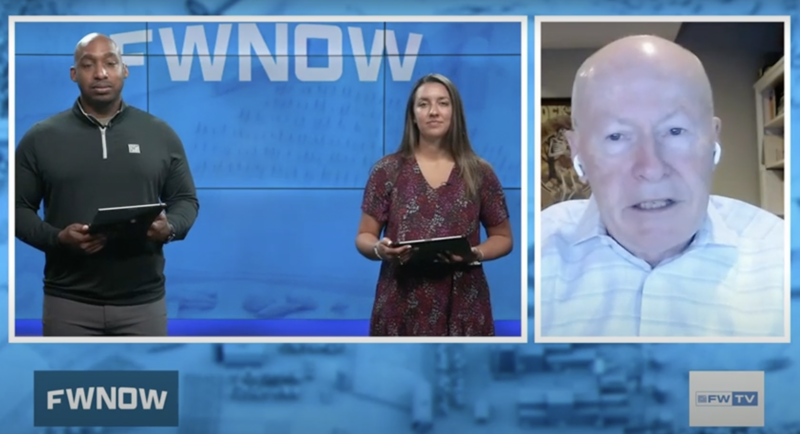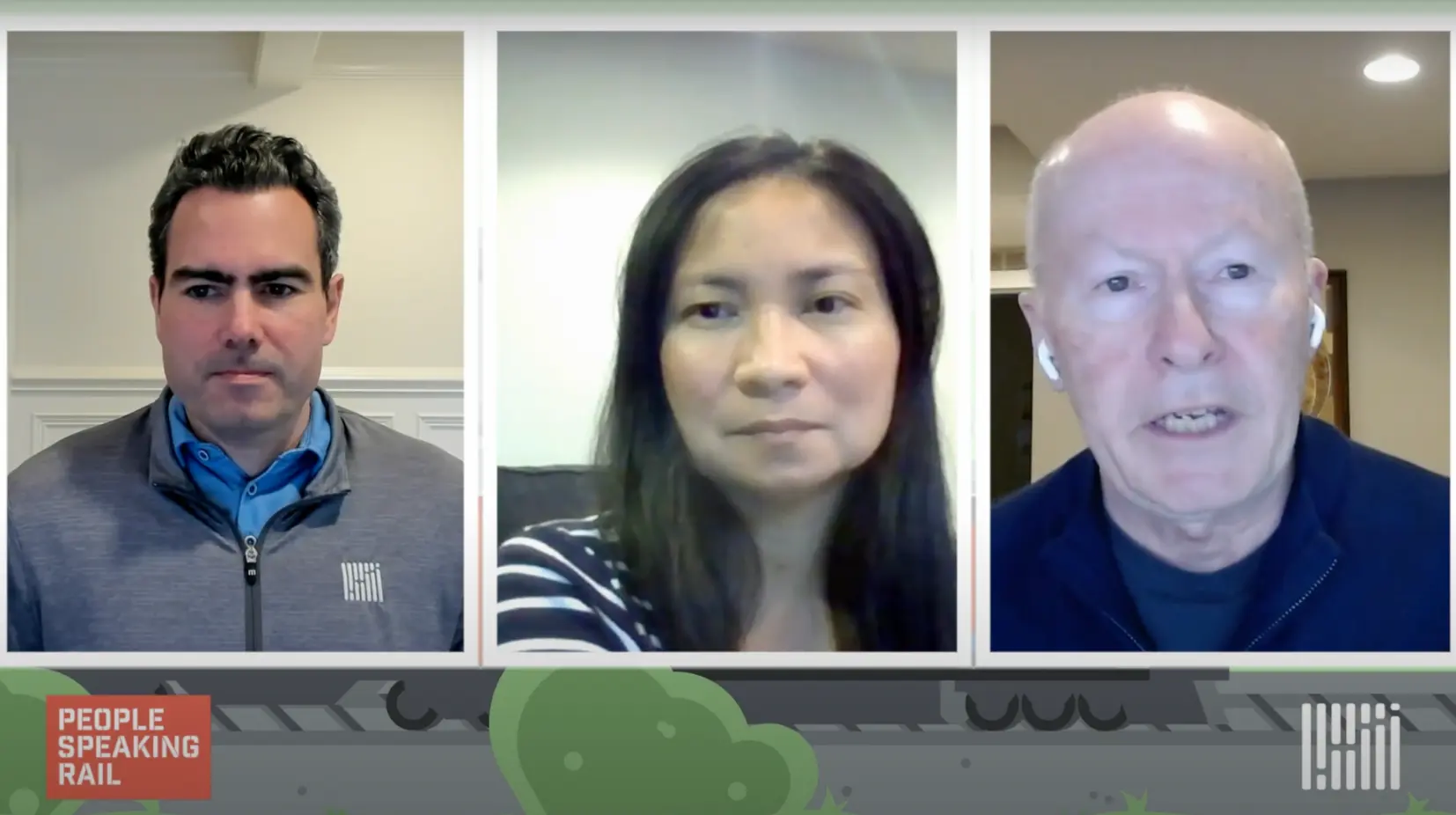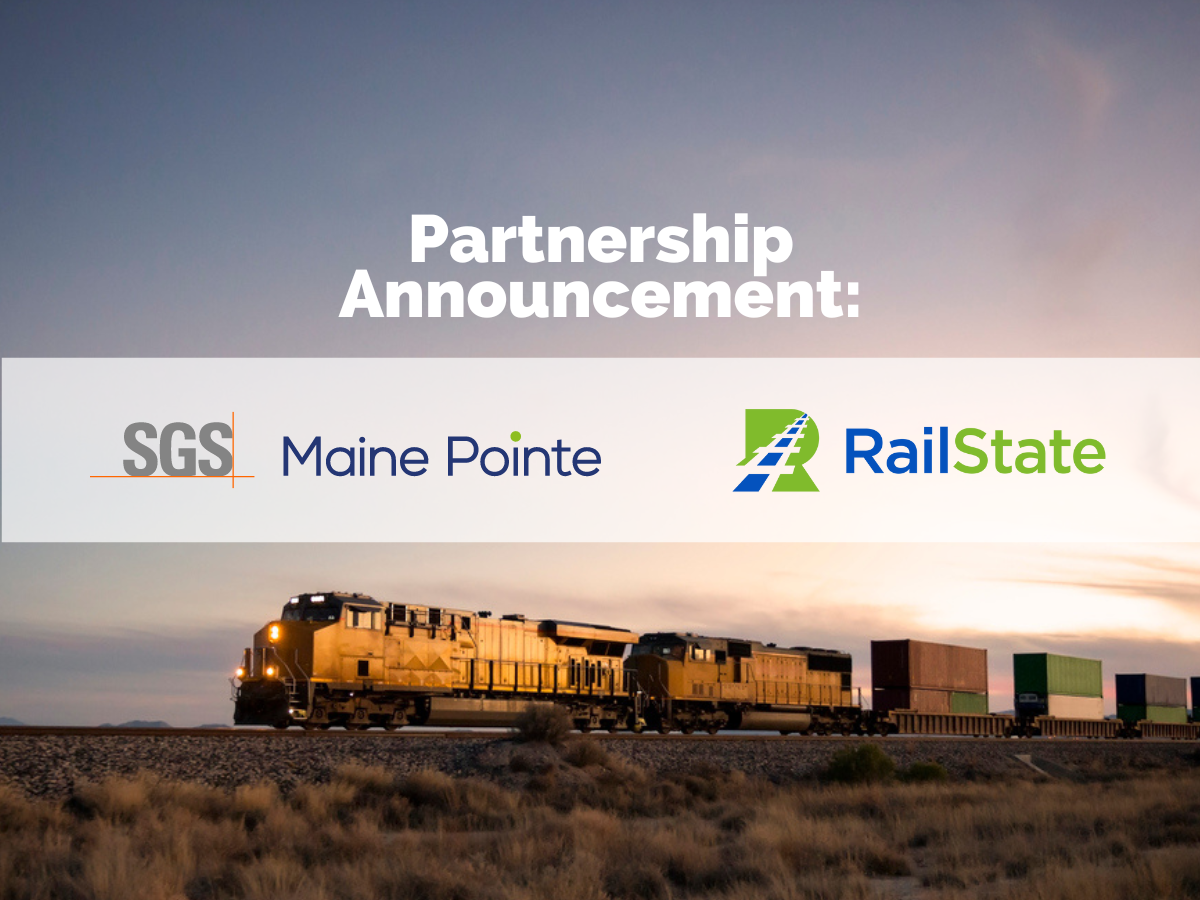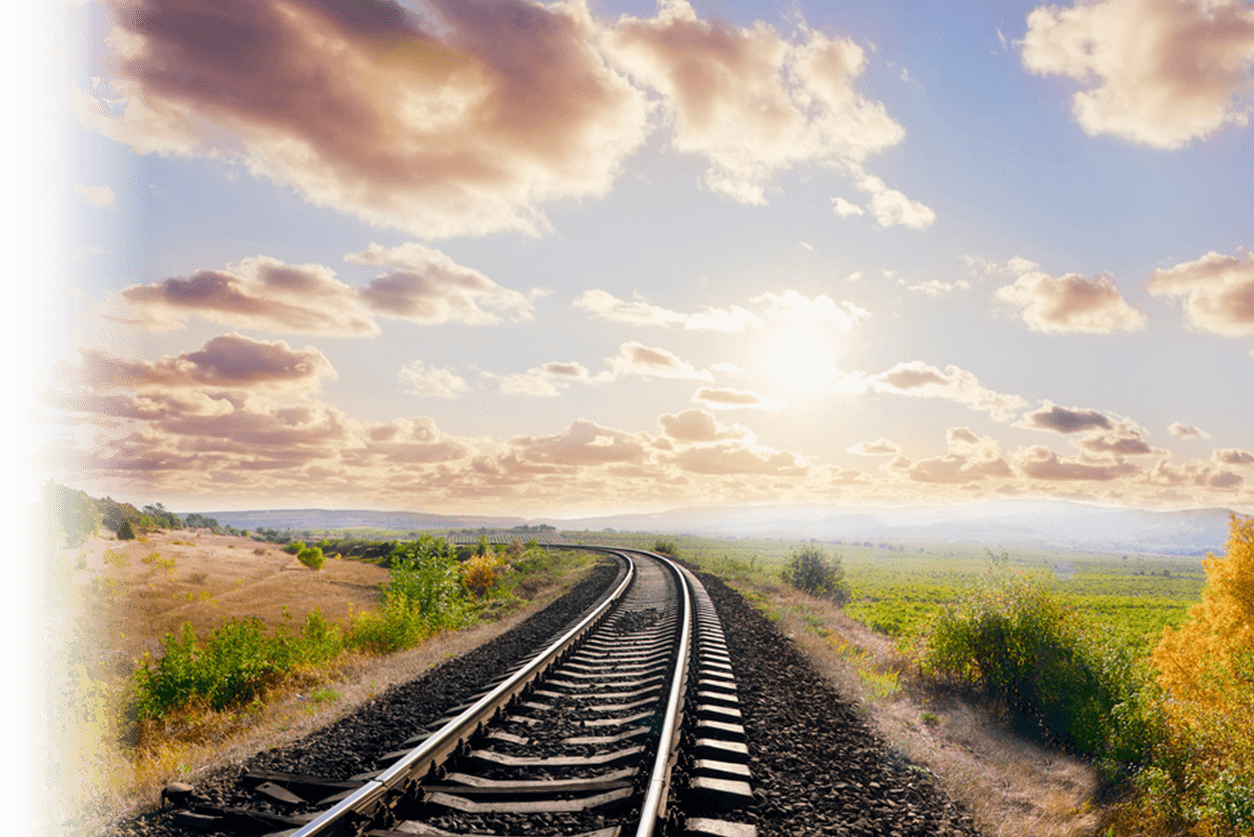
RailState News
Our Latest Media Coverage

Railroads Love ‘Monster’ Trains. Texans Don’t.
“A 3-mile train traveling at 25 miles an hour takes 7 minutes and 12 seconds to clear a crossing, plus around 20 seconds for the gate warning. People waiting to cross “could listen to ‘Texas Hold ’Em’ all the way through, twice,” said Dan Devoe, marketing director at rail network data provider RailState.”

Carload traffic grows at ports of Vancouver, Prince Rupert
While intermodal shipments to the Canadian ports of Vancouver and Prince Rupert have stalled since the start of a strike on July 1, coal and grain movements have increased significantly amid unrelated mitigating factors, according to data from supply chain visibility platform RailState.
The strike by members of the International Longshore and Warehouse Union in Canada at the Pacific coast ports is due to a contract dispute and is close to entering a third week as of Thursday.
“Intermodal experienced the most immediate changes from the work stoppage, slowing to a halt soon after the start of the strike on July 1,” RailState said in a Wednesday report. “Volume changes in other commodities, while not as immediate and stark as intermodal, are also showing a substantial impact from the strike.”

FWNow - The effect of the Canadian port strike on rail traffic
We’ll also talk with John Schmitter of RailState on the effect that the strike on Canadian west coast ports is having on rail traffic out of the region.
B.C. Ports Labor Dispute Drags On (UPDATED July 12)
RailState on July 11 released a report on recent rail movements in Canada. As a provider of “real-time rail network visibility,” the company said it “independently tracks all freight rail movements across Canada, and as such, is uniquely positioned to observe the initial impacts on rail from the strike at the B.C. ports.” Here are its findings:
“As the strike by the International Longshore and Warehouse Union Canada (ILWU Canada) enters its second week, RailState is closely monitoring the flows of rail traffic in the western ports region and the impact on rail traffic throughout Canada and into the United States.

Report: Strike halts nondomestic intermodal traffic at BC ports
Nondomestic intermodal traffic into and out of the ports of Vancouver and Prince Rupert has stopped since the International Longshore and Warehouse Union Canada strike began July 1, according to a report from real-time network visibility platform RailState.
Container volumes moving east from the Port of Vancouver plummeted to just 17 on July 10, down from 1,788 containers on July 1. Westbound containers fell to 63 on July 10, down from 1,537 on July 1.
Intermodal Briefs: ITS Logistics, RailState
Real-time rail network visibility provider RailState, which independently tracks all freight movements across Canada, announced April 18 that a review of eastbound trains originating in Vancouver in the first half of April showed a decrease in intermodal traffic compared to the previous month, and a continuation of low intermodal volume over the previous six months.

FreightWaves – People Speaking Rail: How Shippers Can Utilize Unbiased Data
RailState Co-Founder and CCO John Schmitter joined “People Speaking Rail” on FreightWaves TV to speak about the value of data for rail operations and how Teck Resources Limited used RailState to find a way around a rail line washout.

Podcast Interview with RailState CEO, Jamie Heller
RailState CEO Jamie Heller joined David Naster on “You Just Have to Laugh” to share more about the challenges RailState is trying to solve and how the idea for RailState came about.

FreightWaves - Viewpoint: Railroads talk about ‘growth,’ but where is it?
Attend any meeting involving the railroads and you’re likely to hear a lot about “growth.” At CSX’s investor conference in February, CEO Joe Hinrichs said that the railroad would focus on growth. We heard the same thing at Norfolk Southern’s “investor day” in December. For a few years now, Canadian railroad CN has claimed a commitment to “growth.”
This talk is not just a recent trend. As Tony Hatch pointed out in a recap of RailTrends 2022, Surface Transportation Board Chairman Marty Oberman told the crowd, “Rails said at RT21 that they were pivoting to growth and all I got was this lousy T-shirt!”
Have we seen much real growth? Not yet. So far, talking about growth seems to be the only thing that’s growing. With further consolidation among railroads from Canadian Pacific’s acquisition of Kansas City Southern, will we see real investment in growing volume or can we expect more of the same talk?

FreightWaves - Rail Roundup: CSX, Norfolk Southern and RailState
Rail network visibility provider RailState has added Dean Wise, former vice president of network strategy at BNSF (NYSE: BRK.B), to its board of advisers.
Wise, who now leads an advisory firm serving the transportation, logistics, infrastructure and geospatial sectors, oversaw BNSF’s strategy process and transformational technology initiative, in addition to other responsibilities, according to a Wednesday news release from RailState. He also was involved in developing right-of-way for non-freight rail uses including fiber optics, cell towers and electric transmission lines.
Railway Age - People News: AITX, Metrolink, Pandrol, R&N, RailState, Sound Transit, WSP USA
Dean Wise has joined the Advisory Board at Quincy, Mass-based RailState. Wise is the founder of Dean Wise LLC, a strategic advisory firm serving the transportation, logistics, infrastructure and geospatial sectors. He is currently on the Boards of the University of Denver Transportation and Supply Chain Institute, American Geographical Society, and Precision Terminal Logistics.

Progressive Railroading - Rail supplier news from Pandrol, RailState, Alstom, Duos, AITX and IntelliTrans (March 17)
RailState has added Dean Wise to its board of advisers. Founder of strategy advisory firm Dean Wise LLC, Wise has expertise in deploying transformational technologies to enhance supply-chain efficiency in the transportation, logistics, infrastructure and geospatial sectors, RailState officials said in a press release. Previously, he served as VP of network strategy at BNSF Railway Co.

Former BNSF Vice President of Network Strategy, Dean Wise, Joins RailState’s Advisory Board
RailState, the rail industry’s only provider of real-time rail network visibility, announced that Dean Wise has joined the company’s board of advisors. Wise is an expert at deploying transformational technologies to enhance supply chain efficiency and the founder of Dean Wise LLC, a strategy advisory firm serving the transportation, logistics, infrastructure, and geospatial sectors.
Wise previously served as Vice President, Network Strategy at BNSF, where he oversaw the company’s strategy process, transformational technology initiative, regional franchise development (including western Canada), shortline network, public-private partnerships, rail line sales and dispositions, and development of right-of-way for non-freight rail uses including fiber optics, cell towers, and electric transmission lines.
People News: RailState, New Orleans RTA, UP
RailState, a Quincy, Mass.-based provider of real-time network visibility, announced March 2 that rail industry veterans Adam Nori and Nick Borders have joined the company’s sales and business development team to “scale product adoption across North America.”
“One of our greatest strengths is the deep domain expertise of our team,” said RailState Co-Founder and CEO Jamie Heller. “Adam and Nick have decades of combined experience serving freight rail shippers across North America. Their industry insights and connections will be crucial as RailState grows and delivers on our mission to bring network visibility and transparency to this industry.”

Rail supplier news from RailState, Keolis, TUV, Duos and Transit Wireless
RailState has added Adam Nori and Nick Borders to its sales and business development team to scale product adoption across North America. Nori has 20 years of rail experience and is owner of Pacific Alpine Rail Advisors, a based consulting firm in Calgary, Alberta, that supports rail customers with fleet management, rail-car procurement and business development services. Borders has more than a decade of experience in the rail industry and owns Sequoia Rail LLC, a rail transportation brokerage and consulting firm.

Press Release – RailState Prepares for Fast Growth with Addition of Rail Industry Veterans
RailState, the rail industry’s only provider of real-time network visibility, today announced that rail industry veterans Adam Nori and Nick Borders have joined RailState’s sales and business development team to scale product adoption across North America.
“One of our greatest strengths is the deep domain expertise of our team,” said Jamie Heller, RailState co-founder and CEO. “Adam and Nick have decades of combined experience serving freight rail shippers across North America. Their industry insights and connections will be crucial as RailState grows and delivers on our mission to bring network visibility and transparency to this industry.”

Commerce Express - “Keeping it Rail: Real-Time Visibility for Freight Rail”
“Tracking technologies provide shippers real-time status of their cargo while in transit. Whether it’s air, ocean, truck, or rail, these technologies are becoming the new standard for oversight of shipping.
However, among all transport modes, rail provides the least of these capabilities. While individual railcars can be tracked, there’s no real-time visibility over any of its vast railway network or its trains.
But maybe this will all change. RailState, a rail tech startup, has thrown its hat in the ring to address the issue.”

FreightWaves - "Tech Company Seeks to be Waze for Trains"
What if rail shippers could track not only the location of their rail cars but also the train that those rail cars are on and how that train performs on a certain line segment over time?
That is the question industry consultant John Schmitter seeks to answer through the rail technology startup RailState, a Quincy, Massachusetts-headquartered data visibility provider.

SGS Maine Pointe Partners with RailState to Provide Rail Network Visibility
BOSTON, MA, Jan. 09, 2023 / Global supply chain and operations implementation consulting firm, SGS Maine Pointe, a member of the SGS Group, announced today that it has partnered with RailState, a comprehensive platform for real-time visibility of freight railway network conditions, performance, priority, and volume.

Press Release – RailState’s Network Covers All of Canada
QUINCY, MA, Dec. 6, 2022 / RailState is excited to announce that their network of sensors now covers all of Canada, spanning both CN and CP railways.
“We’re thrilled to have completed our Canadian network coverage. This marks a major step for RailState, as we can now see every train that travels along the CN and CP, allowing for overall network visibility. We’re excited to move forward with our US coverage,” said RailState CEO Jamie Heller.

Railway Age - “Wayside Cameras, Integrated Sensors as Logistics Tools”
The digital age of telematic network monitoring comes in different business models. It might even help resolve passenger and freight train capacity questions. Jim Blaze takes a look at how cameras might displace or at least supplement confusing private spreadsheet calculations as to network capacity and fluidity, as well as help shippers adjust their railway routing options when certain rail routes become congested.
Copyright © 2025
RailState LLC